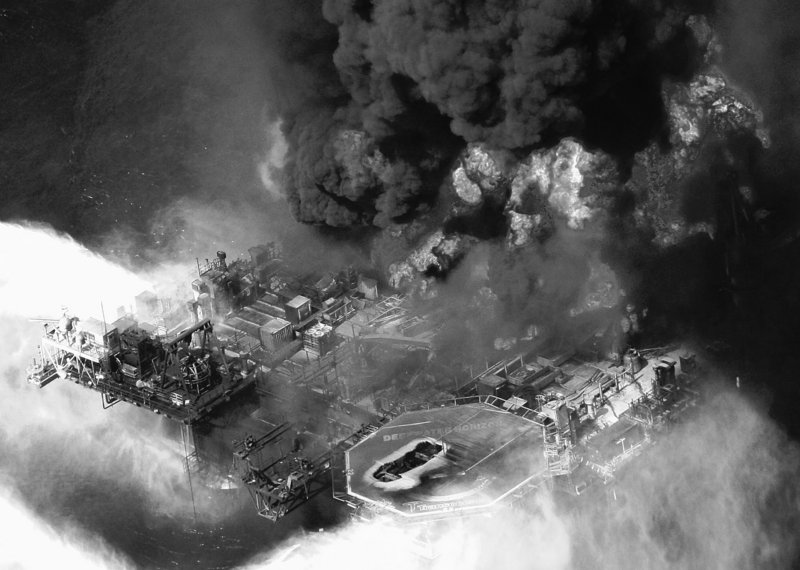NEW ORLEANS – Now that BP appears to have vanquished its ruptured well, authorities are turning their attention to gathering evidence from what could amount to a crime scene at the bottom of the sea.
The wreckage — including the failed blowout preventer and the blackened, twisted remnants of the drilling platform — may be Exhibit A in the effort to establish who is responsible for the biggest peacetime oil spill in history.
And the companies under investigation will be in charge of recovering the evidence.
Hundreds of investigators can’t wait to get their hands on evidence. The FBI is conducting a criminal investigation, the Coast Guard is seeking the cause of the blast, and lawyers are pursuing millions of dollars in damages for the families of the 11 workers killed, the dozens injured and the thousands whose livelihoods have been damaged.
“The items at the bottom of the sea are a big deal for everybody,” said Stephen Herman, a New Orleans lawyer for injured rig workers and others.
BP will surely want a look at the items, particularly if it tries to shift responsibility for the disaster onto other companies, such as Transocean, which owned the oil platform, Halliburton, which supplied the crew that was cementing the well, and Cameron International, maker of the blowout preventer.
BP and Transocean — which could face heavy penalties if found to be at fault — have said they will raise some of the wreckage if it can be done without doing more damage to the oil well. That would give the two companies responsibility for gathering up the evidence that could be used against them.
But the federal government has said it simply doesn’t have the know-how and the deep-sea equipment that the drilling industry has. And it said the operation will be closely supervised by the Coast Guard.
Lawyers will be watching, too, to make sure the companies don’t do anything untoward, said Brent Coon, an attorney for one of the thousands of plaintiffs seeking damages.
“I think they would do something in front of their own mother if they could,” Coon said. “But the reality is there are a lot of eyes watching them and a lot of smart scientists who would know if they did anything they weren’t supposed to.”
The crisis in the Gulf appeared to be drawing to a close this week when BP plugged up the top of the blown-out well with mud and then sealed it with cement.
BP Senior Vice President Kent Wells said crews plan to resume drilling Sunday night on a relief well more than two miles below the seafloor that will be used to inject mud and cement just above the source of the oil, thereby sealing off the well from the bottom, too. The two wells should hook up between Aug. 13 and Aug. 15, Wells said.
In other developments Friday:
• BP said it might drill again someday into the same undersea reservoir of oil, which is still believed to hold nearly $4 billion worth of crude. That prospect is unlikely to sit well with Gulf Coast residents furious at the oil giant.
“There’s lots of oil and gas here,” Chief Operating Officer Doug Suttles said. “We’re going to have to think about what to do with that at some point.”
• BP said Suttles — who has spent more than three months managing BP’s response efforts on the Gulf — is returning to his day job in Houston. Mike Utsler, a vice president who has been running BP’s command post in Houma, La., since April, will replace him.
Investigations of the disaster began immediately after the rig blew up on April 20. The government alone is conducting about a dozen, including several congressional investigations, criminal and civil probes by the Justice Department, and an examination by an expert panel convened by President Obama.
Officials want to find out not only the cause of the explosion, but also how oil drilling a mile or more below the surface can be made safer.
A final outcome could be years away, particularly if someone is charged with a crime, said David Uhlmann, former chief of the Justice Department’s environmental crimes team.
“Normally an investigation of a case this complicated would take two to three years. This is not a normal case,” he said. “This is the worst environmental disaster in U.S. history.”
Send questions/comments to the editors.



Success. Please wait for the page to reload. If the page does not reload within 5 seconds, please refresh the page.
Enter your email and password to access comments.
Hi, to comment on stories you must . This profile is in addition to your subscription and website login.
Already have a commenting profile? .
Invalid username/password.
Please check your email to confirm and complete your registration.
Only subscribers are eligible to post comments. Please subscribe or login first for digital access. Here’s why.
Use the form below to reset your password. When you've submitted your account email, we will send an email with a reset code.